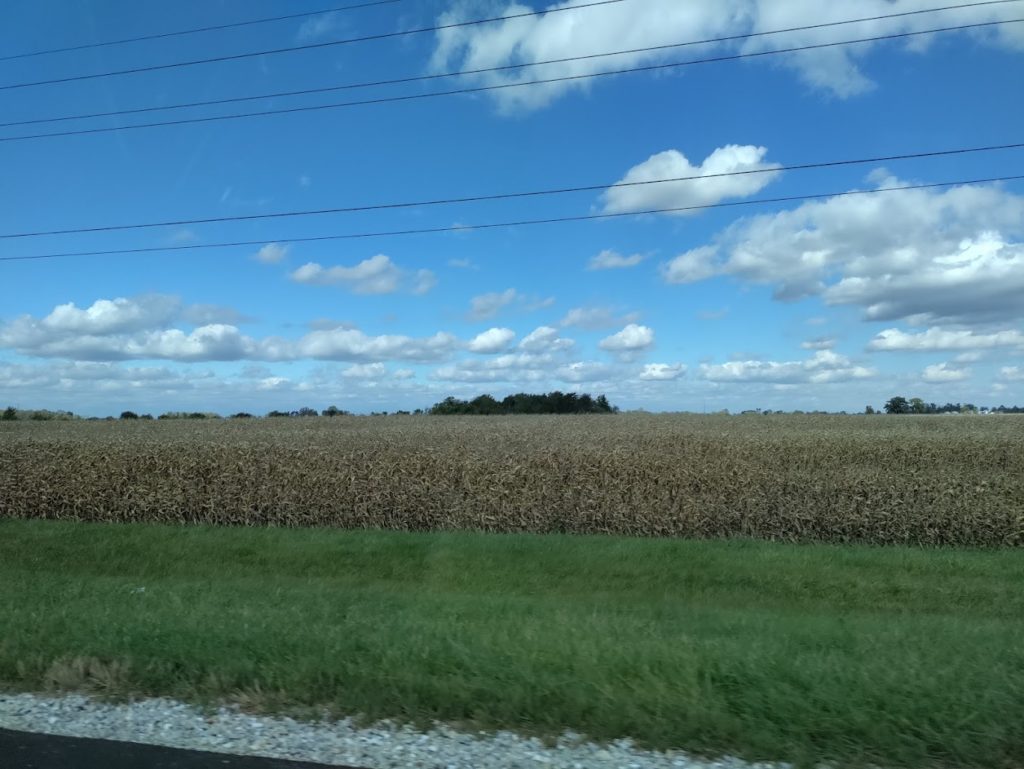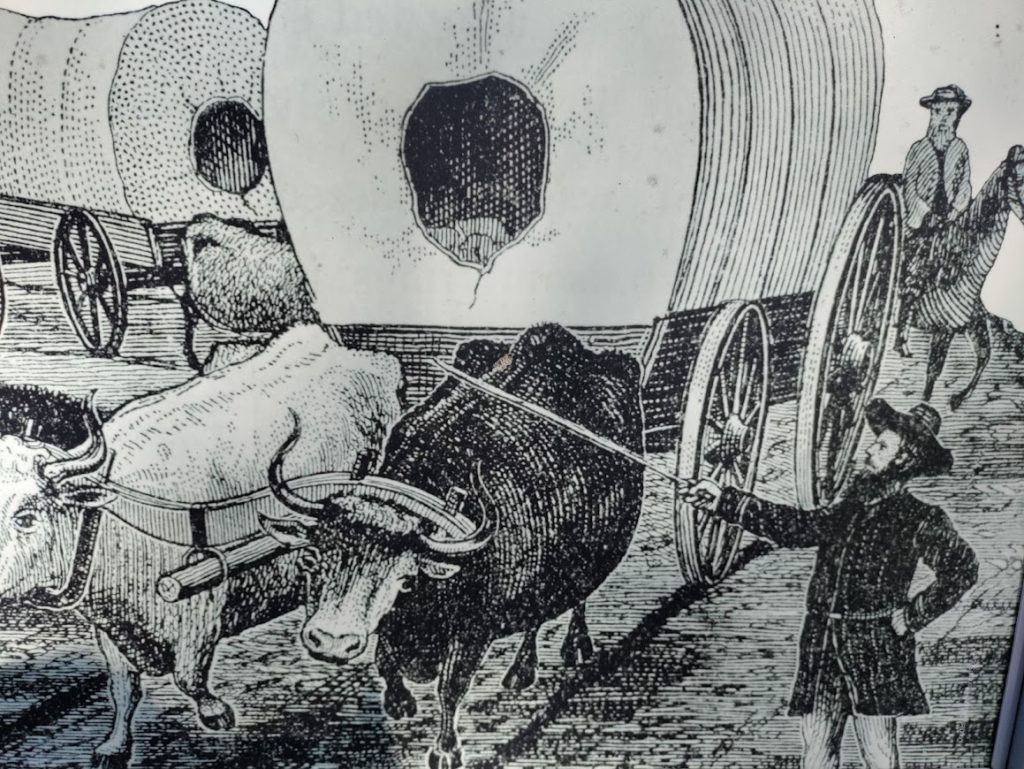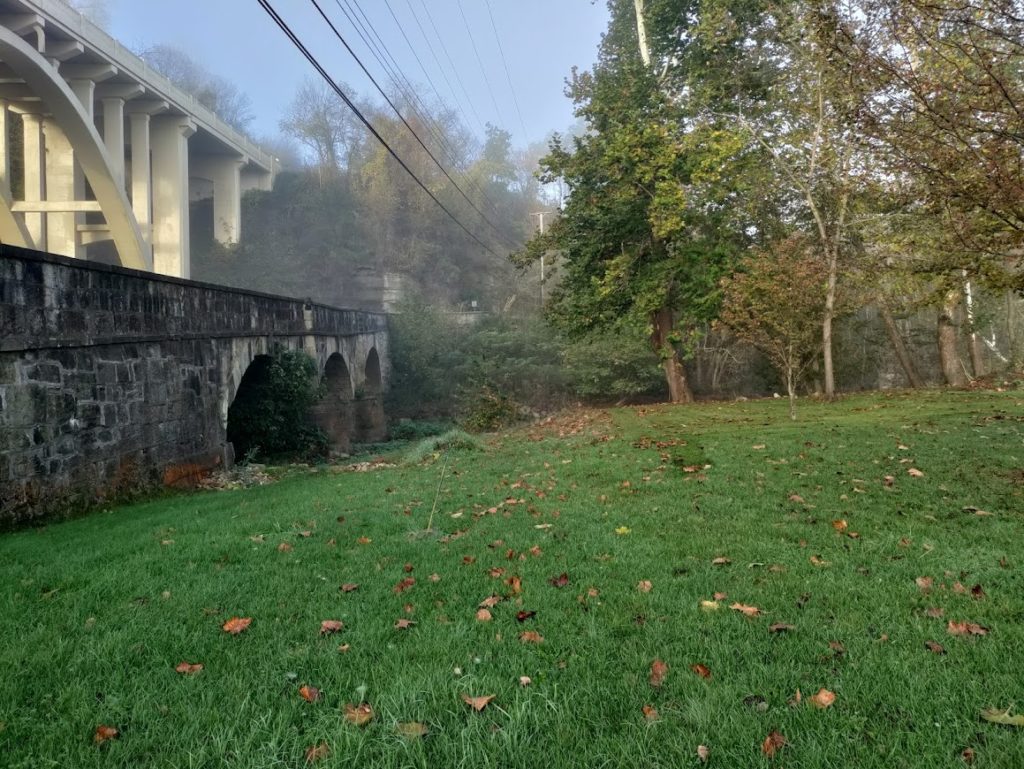We’ve finally completed the task we set for ourselves back in January. Al and I have now driven the whole National Road – our nation’s first infrastructure project – from Maryland to Illinois. We did it in bits over the course of the last eleven months, so that we could stop and absorb the history and culture, rather than driving right by it.
Our most recent drive took us from the West Virginia/Ohio border, through Ohio and Indiana, to Vandalia, the old Illinois state capital. Along the way, we sampled craft whiskey and Indiana’s state pie, got lost hunting for an original Macadam section of the road, visited a little-known Confederate cemetery in Ohio, and drove past miles and miles and miles of corn.
Ohio and Indiana treasure their old “pike towns.” Each state highlighted a particular aspect of life along the National Road, which I will feature in my next two blog posts. Illinois’ approach, sadly, seems to be to pretty much ignore the old road – other than its terminus in Vandalia.
Driving the length of the road was fun and enlightening. It gave us a deep respect for our nation’s first infrastructure project. And, similar to 21st-century infrastructure projects, we learned that the origin of the road was controversial and steeped in politics.
George Washington again
It seems that almost everything that happened in late-18th-century America starts with George Washington. And that is certainly true of the National Road. Washington was with the Braddock and Forbes expeditions when they hacked through densely forested mountains to create the first sections of what would later become the National Road.
Years later, as President, he was shaken by the Whiskey Rebellion. Washington worried that, as settlers progressed west, they would lose ties and loyalty to the new federal government.
He was especially concerned about Great Britain and Spain wooing the settlers’ allegiance. The solution, he suggested, was to build a road, to “open a wide door, and make a smooth way for the produce of that Country to pass to our Markets before the trade may get into another channel.”
At the same time, veterans of the Revolutionary War, who had been paid partially in land warrants, were clamoring for the government to open Ohio to settlement. And settlers already living in western Pennsylvania demanded a road to help them get their produce to market. The Whiskey Rebellion had been about precisely that issue. Whiskey was easier and more profitable than wheat to transport on abominable 18th-century paths through woods and over mountains.
Washington also had a personal financial interest in tying the west closely to the government in the east. He had invested heavily in land in western Pennsylvania and eastern Ohio. Plus ca change, plus c’est la meme chose in politics.
But Washington didn’t get his way immediately. There was, of course, controversy. This was America, after all.
Joe Biden: not the first guy to have trouble passing an infrastructure bill
The controversy outlasted both Washington’s and John Adams’ administrations, and continued into the Jefferson administration. Some members of Congress didn’t think the federal government had the constitutional authority to finance internal improvements.
This disagreement was one of the earliest examples of the big-government/small-government tension that still often paralyzes our government today. And, in an early example of practical and creative compromise, Albert Gallatin came up with a solution to the impasse.
Gallatin proposed that the new states and the federal government come to an agreement. The states would exempt from taxation for ten years the lands sold by Congress. In return, the proceeds from the land sales would be used to construct a road. In effect, the states, not the federal government, were financing the National Road. The Senate passed the National Road bill on December 27, 1805.
But there was still more political controversy in the House of Representatives. Southern representatives opposed the bill because no part of the road passed through their states. Although the new road would pass through southwestern Pennsylvania, many Pennsylvania representatives were miffed that Philadelphia was left out. Despite these objections, the bill passed the House 66-50 on March 24, 1806.
Construction began in 1811. And – again, like so many modern projects – the cost of the road initially exceeded the original estimate of $6000 per mile. As the National Road was laboriously carved out of the hills and valleys of Appalachia, the cost soared to as high as $13,000 per mile. When the builders reached the plains of Ohio the cost per mile plummeted to $3400 per mile.
Finally! The road reaches Ohio!
But, before that could happen, more controversy had to be resolved. By 1818, the road was complete to the Ohio river, the border between the current states of West Virginia and Ohio. But the question of federal authority over improvements arose again. President Madison vetoed Congress’ bill authorizing the Ohio section of the road, believing it to be unconstitutional.
Finally in 1824, President Monroe, convinced that internal improvements could be justified under the “general welfare” clause of the Constitution, signed a bill.
Congress made its last appropriation for the National Road in 1838. The total amount spent was just under seven million dollars. Such a small investment knit together a nation, bringing prosperity to millions of farmers, merchants and manufacturers along its route.
Those farmers, merchants and manufacturers will be the focus of my next two posts, about what we found and learned in Ohio and Indiana. Stay tuned!
In case you missed them, here are links to my previous posts about our drives along the National Road:
Fort Necessity & Braddock’s Road
Sources
Schneider, Norris F, The National Road Main Street of America. (Columbus, OH: The Ohio Historical Society, 1975.
Newcott, William R., “America’s First Highway.” National Geographic, March 1998, pp. 83-99.




